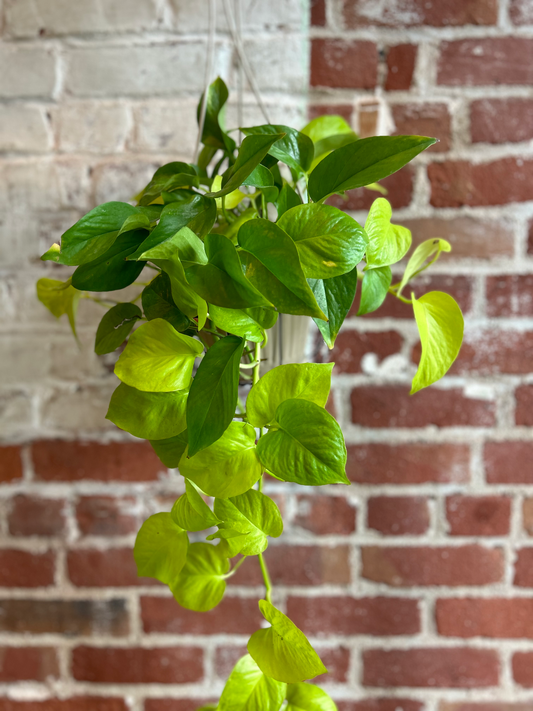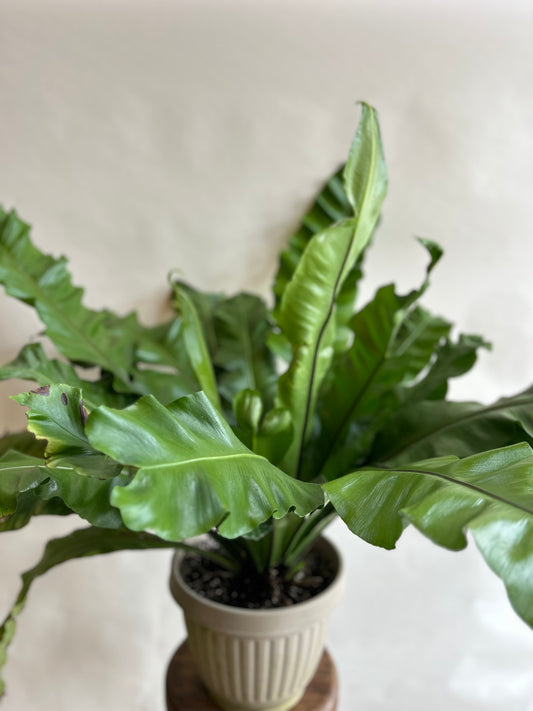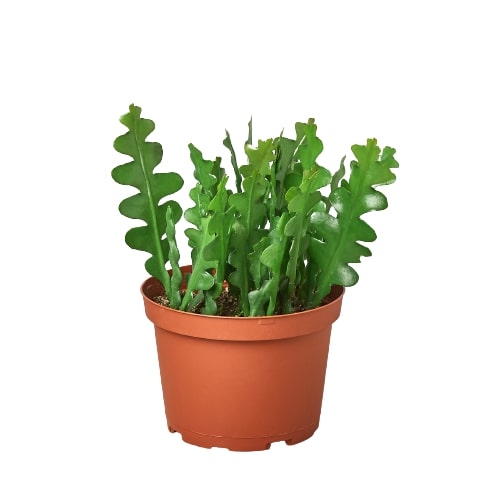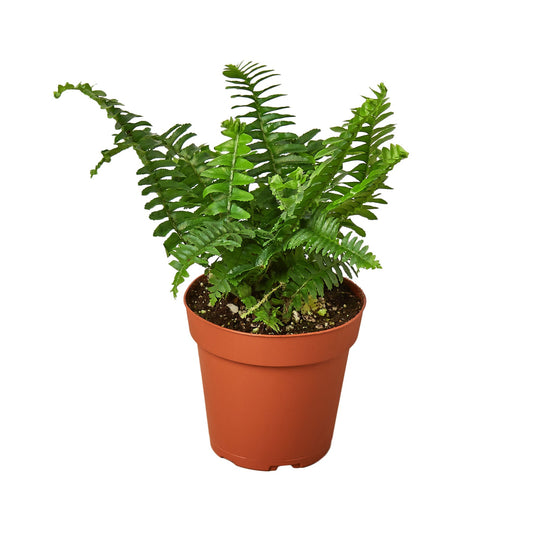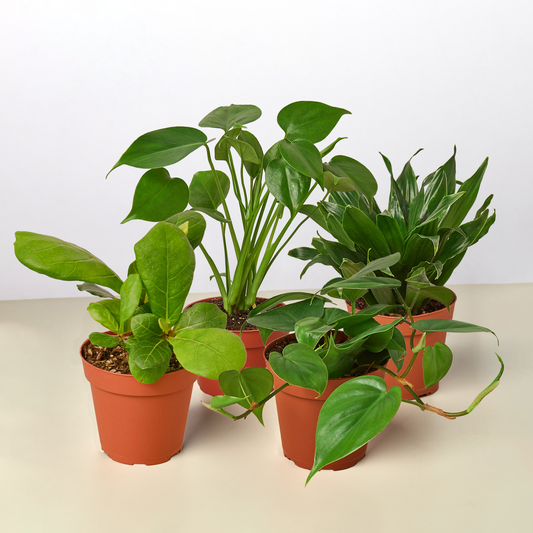Do Palm Plants Bloom? A Guide to Palm Plant Flowers
Cafe Planta Team
When you think of palm plants, the first thing that might come to mind is their iconic fan-like leaves swaying gently in a tropical breeze. But did you know that some palm plants can also produce flowers? It's not something you hear about every day, which makes it even more fascinating.
In this article, we'll explore the intriguing world of palm plant blooms. We'll touch on which types of palms are likely to flower, what these flowers look like, and how you can encourage your own palm plant to bloom. So, whether you're a seasoned plant parent or just dipping your toes into the plant world, this should be a fun and informative read!
Do Palm Plants Really Bloom?
Yes, palm plants can bloom! However, not all palms are created equal when it comes to flowering. Some species are more likely to produce flowers than others. But before you get too excited, remember that blooming in palms is a bit different from what you might expect with other flowering plants like roses or orchids. Palm flowers tend to be smaller and less showy, but they have their own unique charm.
Most palm flowers are small and clustered on a stalk or inflorescence, which might remind you a bit of corn tassels. Their colors can range from white to yellow or even a subtle green. While they may not steal the spotlight, they add a fascinating element to these already captivating plants.
So, why do palms flower? Like all flowering plants, the primary purpose is reproduction. The flowers lead to the production of seeds (or sometimes fruits), ensuring the next generation of palms. But for indoor growers, seeing a palm flower is more of a delightful surprise and a testament to good plant care.
Which Palm Species Are Likely to Bloom?
While virtually all palms have the potential to bloom, some are more prone to doing so in a home setting. Here are a few that you might come across:
- Areca Palm: Known for its feathery, arching fronds, the Areca palm can produce small yellow flowers when it's mature and happy.
- Parlor Palm: This popular indoor palm might surprise you with tiny, yellowish flowers when it's in the right conditions.
- Sago Palm: Although not a true palm, the Sago palm can produce a cone-like structure that serves as its flower.
- Majesty Palm: While less common indoors, it can flower with tiny white blossoms in optimal conditions.
It's worth noting that palms typically need to reach a certain level of maturity before they start flowering. This can take several years, especially for indoor plants. But with patience and proper care, you might just witness this special event.
Conditions That Encourage Palm Blooming
While seeing your palm bloom indoors might not be an everyday occurrence, several conditions can enhance the likelihood of it happening:
- Light: Palms often require bright, indirect light to thrive and potentially bloom. While some can tolerate lower light levels, adequate light is crucial for flower production.
- Temperature: Most palms prefer warm temperatures, similar to their tropical origins. Keeping them in a warm environment can support blooming.
- Humidity: High humidity levels are a friend to palms. If your home is dry, consider using a humidifier or misting your plants regularly.
- Soil and Water: Well-draining soil is essential. Overwatering can lead to root rot, which can prevent flowering. Ensure the top inch of soil is dry before watering again.
Remember, patience is key. Even with perfect conditions, it may take time for your palm to bloom. But the wait can make the experience all the more rewarding.
How to Care for Flowering Palms
If your palm does produce flowers, congratulations! You're clearly doing something right. But what comes next? Here's how to keep your flowering palm happy:
- Continue Regular Care: Keep up with your usual care routine. Ensure the plant receives adequate light, water, and humidity.
- Pruning: You don't need to prune the flowers unless they start looking spent or unsightly. Removing dead or brown leaves can help the plant direct energy towards healthy growth.
- Check for Pests: Flowering can sometimes attract pests. Keep an eye out for any unwanted visitors and treat them promptly with appropriate measures.
Flowers will eventually fade, but that's perfectly normal. After flowering, palms often go through a rest period. During this time, continue providing good care, and your plant will remain healthy and ready for the next growth phase.
Common Myths About Palm Flowers
With the mystery surrounding palm flowers, it's no surprise that a few myths have cropped up over time. Let's set the record straight on a couple of these:
- Myth #1: All Palms Flower Indoors: Not all palms will bloom inside. Some simply don't have the right conditions, while others may need more time to mature.
- Myth #2: Palm Flowers Are Harmful: Some people might think palm flowers are toxic or harmful. In reality, they're just part of the plant's natural cycle and pose no danger to your home or health.
Understanding these myths can help you better appreciate your palm's flowering process. It’s all part of nature's wonderful intricacies.
Can You Make a Palm Bloom?
While you can't force a palm to bloom, you can certainly encourage it. Focus on providing the best possible care and the right environment. Here's a recap of some tips:
- Ensure Adequate Light: Place your palm in a spot with bright, indirect sunlight.
- Maintain Proper Temperature: Keep your home warm, ideally between 65-75°F (18-24°C).
- Boost Humidity: Use a humidifier or mist the plant to keep it happy.
- Feed Occasionally: Palms aren't heavy feeders, but a balanced liquid fertilizer during the growing season can boost health.
While these steps can increase the chances of flowering, remember that every plant is unique. Don't be discouraged if your palm doesn't bloom right away. Its health and vibrancy are the most important indicators of good care.
What to Do With Palm Seeds or Fruits
If your palm rewards you with seeds or fruits after flowering, you might wonder what to do next. Here are a few options:
- Propagation: If you're feeling adventurous, you can try propagating new palms from seeds. It requires patience and a little know-how, but it can be a fun project.
- Composting: If propagation isn't your thing, consider composting the seeds or fruits. It's an eco-friendly way to recycle plant material.
- Display: Some people like to keep seeds as a natural decoration. They can be a unique addition to a plant-themed centerpiece.
Whatever you choose, it's a chance to engage more deeply with your plant and add a touch of nature to your home.
How to Incorporate Palms Into Your Home Decor
Beyond their potential to bloom, palms are excellent for adding a touch of the tropics to your interior decor. Here are some tips to style them effectively:
- Choose the Right Spot: Place your palm where it can get the light it needs and where its size complements your decor.
- Pair With Complementary Plants: Group palms with other greenery to create a lush corner. Ferns, spider plants, and pothos make great companions.
- Select Stylish Pots: Choose pots that match your aesthetic, whether it's modern, rustic, or bohemian.
- Use As a Focal Point: A tall palm can serve as a stunning focal point in a room. Use it to draw attention and anchor a space.
By integrating palms into your decor, you can enjoy their beauty and potential blooms while enhancing your home's ambiance.
Final Thoughts
As we've discovered, palm plants can indeed bloom, and while their flowers might not be the showiest, they add a delightful twist to these beloved houseplants. With the right care and a bit of patience, you might be lucky enough to experience this rare event in your own home.
At Cafe Planta, we love sharing our passion for plants with you. Whether you're looking for a new leafy friend or need advice on plant care, we're here to help. Feel free to email us or connect on Instagram. Let's grow together and make our homes greener and more vibrant!


